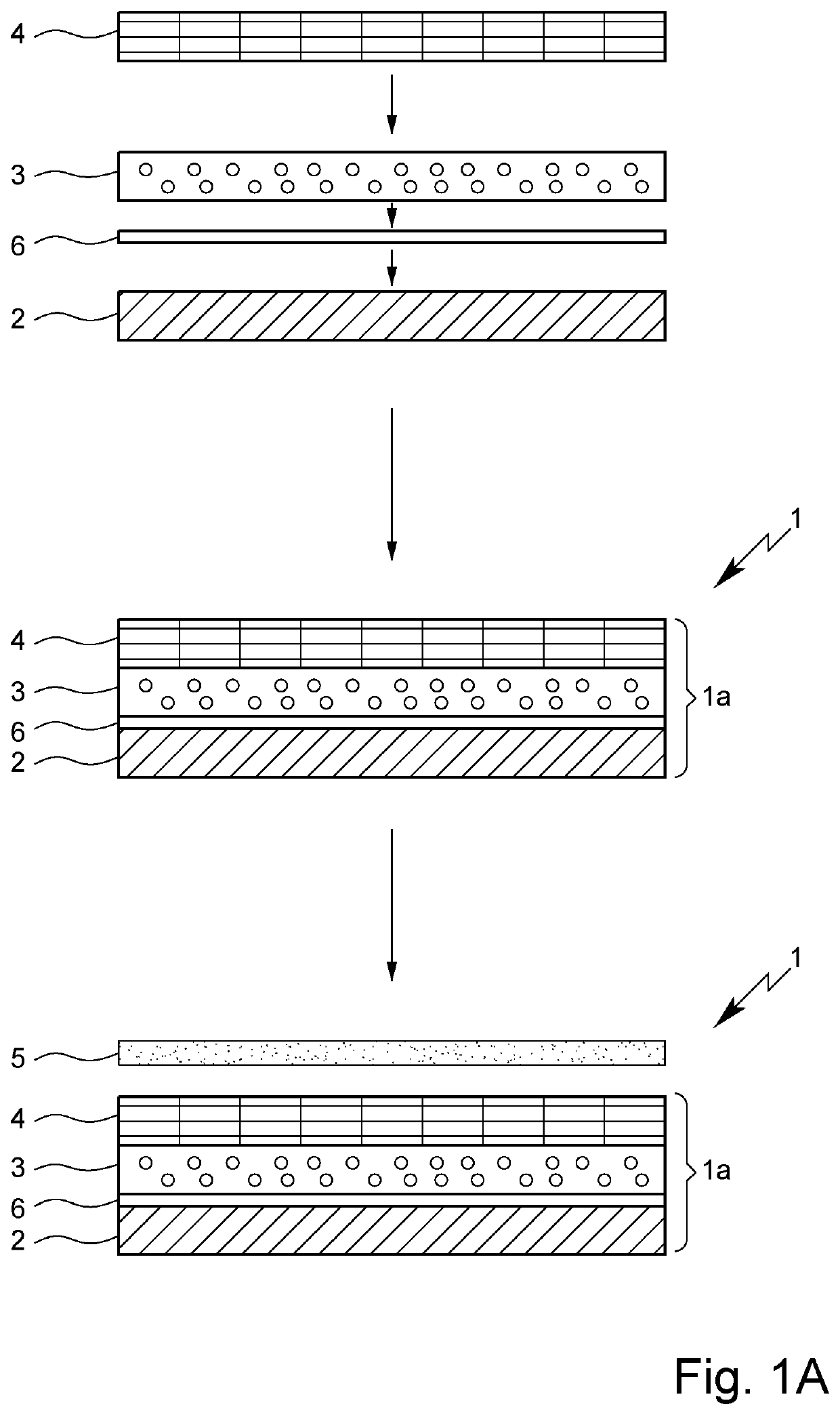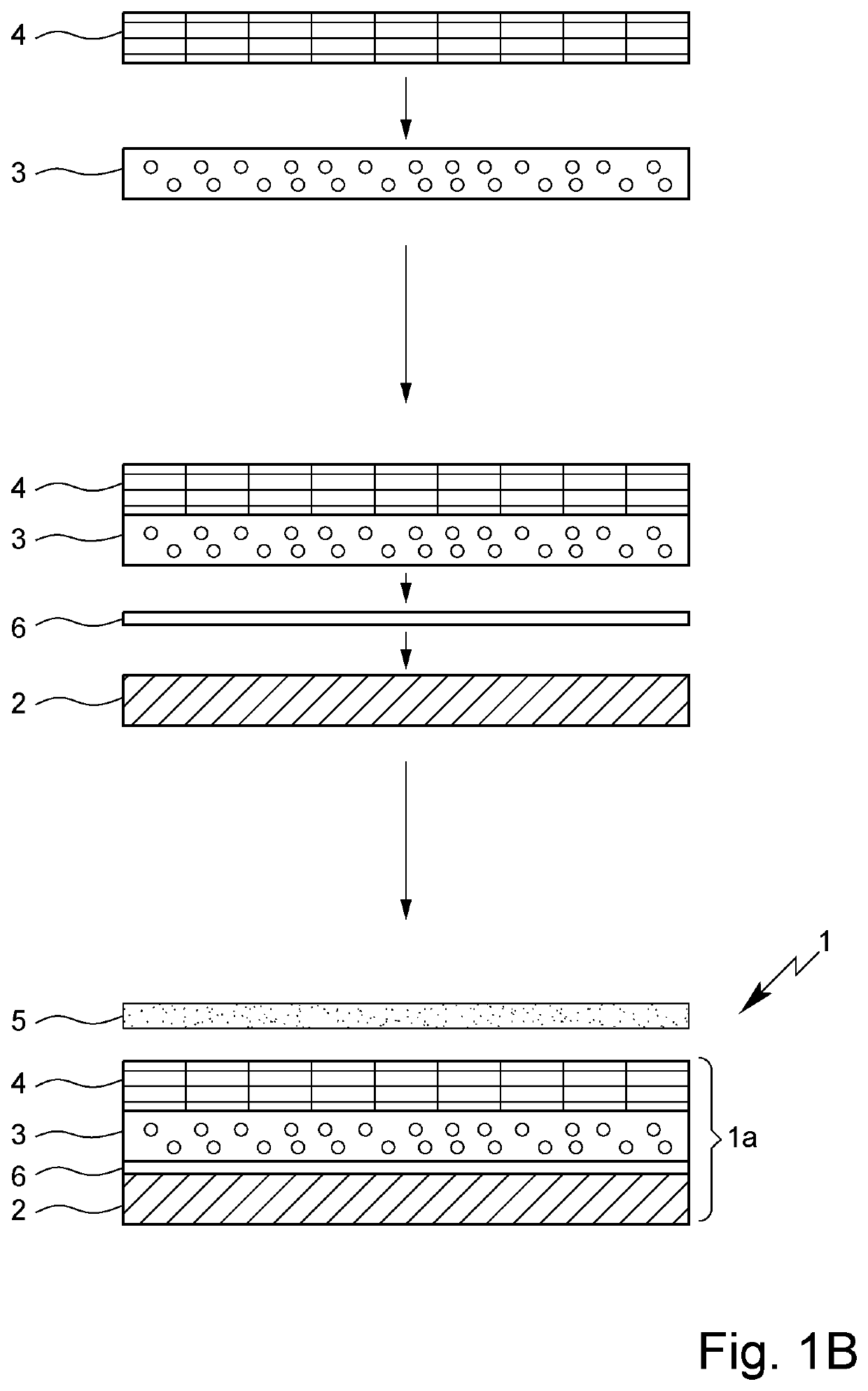Method for producing a textile composite material and textile composite material produced according to said method
a textile composite material and textile composite material technology, applied in the field of functional textile materials, can solve the problems of reducing the shaping or design freedom of the relevant cover or covering, the prior art surface materials in this respect are not always capable of satisfactorily meeting the aforesaid requirements, and the process is complex, so as to achieve high or improved compatibility of surface materials, reduce the effect of heat shrinkage and high load-bearing capacity
- Summary
- Abstract
- Description
- Claims
- Application Information
AI Technical Summary
Benefits of technology
Problems solved by technology
Method used
Image
Examples
Embodiment Construction
[0044]The subject matter of the present invention—according to a first aspect of the present invention—is therefore a method for producing a textile composite material having shrink properties, in particular heat shrink properties, preferably in the form of a shrinkable, in particular heat-shrinkable textile upholstery and / or covering material, preferably for seating furniture, wherein a shrinkable, in particular heat-shrinkable textile carrier layer is joined, preferably extensively joined, in particular adhesively bonded, to at least one foam-based surface material, in particular foam layer, using at least one binder, in particular adhesive, at a temperature below the shrink temperature, in particular heat shrink temperature, of the textile carrier layer and wherein the foam-based surface material is provided on the side facing away from the textile carrier layer with at least one in particular extensive textile sliding and / or protective material.
[0045]As a result of the method ac...
PUM
| Property | Measurement | Unit |
|---|---|---|
| temperatures | aaaaa | aaaaa |
| temperature | aaaaa | aaaaa |
| pressure | aaaaa | aaaaa |
Abstract
Description
Claims
Application Information
 Login to View More
Login to View More - R&D
- Intellectual Property
- Life Sciences
- Materials
- Tech Scout
- Unparalleled Data Quality
- Higher Quality Content
- 60% Fewer Hallucinations
Browse by: Latest US Patents, China's latest patents, Technical Efficacy Thesaurus, Application Domain, Technology Topic, Popular Technical Reports.
© 2025 PatSnap. All rights reserved.Legal|Privacy policy|Modern Slavery Act Transparency Statement|Sitemap|About US| Contact US: help@patsnap.com



